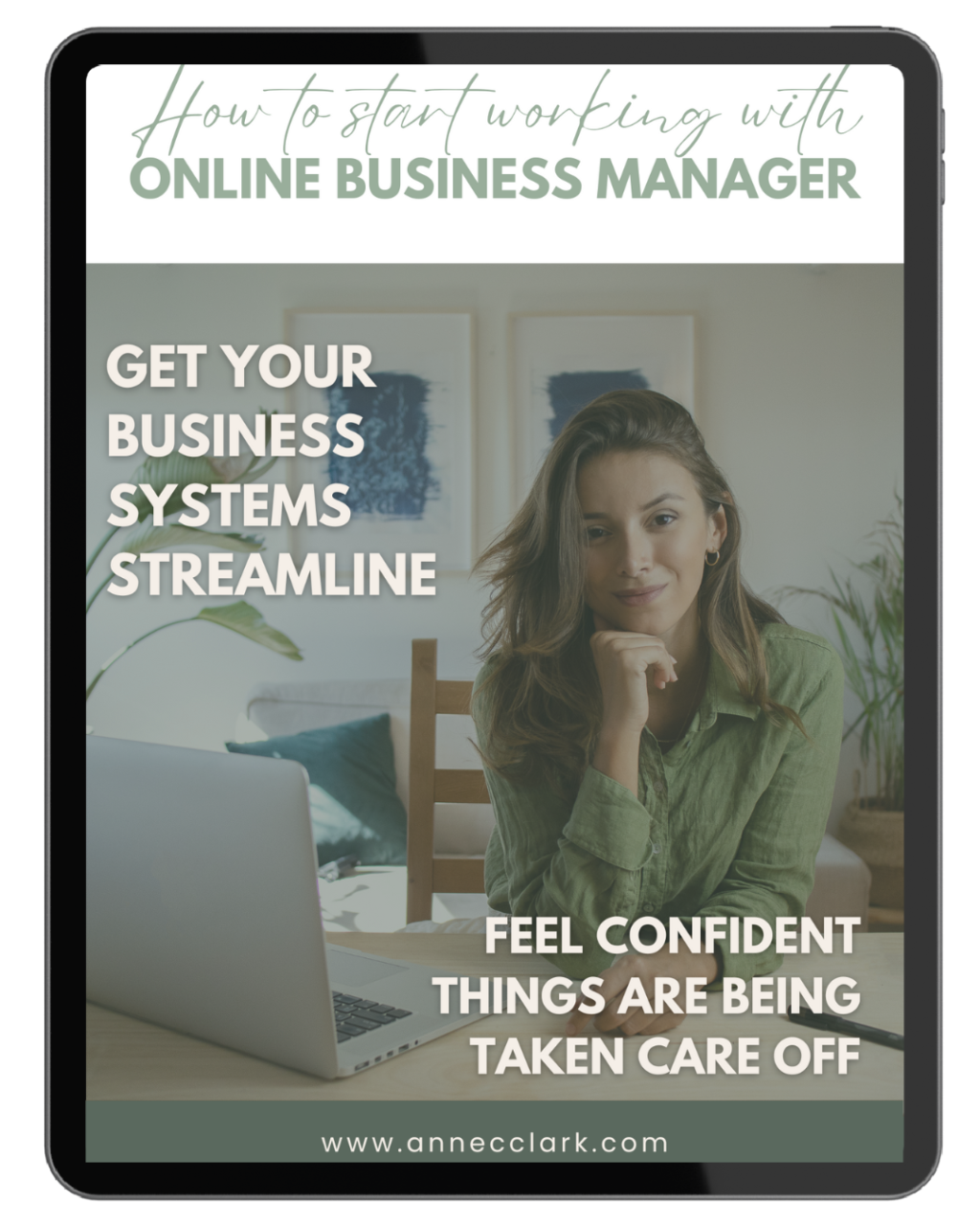
by Anne Clark | Jan 15, 2025 | Business
It’s a new year, folks, and that means it’s time for the annual “new year, new you” chant. But instead of tackling a juice cleanse (which no one really sticks to), why not cleanse your business systems instead? Yep, it’s time to dust off those spreadsheets, tackle the tangled mess of your software subscriptions, and make your operations as smooth as a kangaroo hopping along the beach.
This guide will show you how to audit your business systems with a little flair—and maybe even have a laugh along the way.
Why Auditing Your Business Systems is a Game-Changer
Let’s face it, running a small business can sometimes feel like wrestling a croc – chaotic and downright exhausting. But when your systems are running like a well-oiled machine, everything gets easier.
By auditing your business systems, you can:
-
Save time by cutting out useless apps.
-
Save money by ditching tools you’ve forgotten you’re paying for.
-
Create workflows that don’t feel like pulling teeth.
-
Lay a foundation for scaling up when your big break comes (because it’s coming, mate).
Step 1: Review Your Current Tools and Software
First up, grab a cuppa and list every bit of software or tool your business uses. From your accounting system to social media scheduling, take stock of the lot. Then ask yourself the hard questions:
-
Is this tool actually helping, or is it just collecting dust?
-
Does it integrate with other tools, or is it as stubborn as a toddler refusing veggies?
-
Are there cheaper alternatives?
Step 2: Analyse Your Processes
Next, take a good look at how your business runs. Map out workflows for sales, customer service, and admin tasks. Now, here’s the fun bit – find the clunky bits and fix them.
-
Is your team spending hours on manual tasks that could be automated?
-
Are there processes that make it feel like hard work?
Drawing a visual map of your processes (on a whiteboard, paper, or using free tools) can help you spot where things get bogged down. A smooth process means fewer headaches and more time for that mid-afternoon Tim Tam break.
Step 3: Check in on Team Roles and Responsibilities
Your team is like your footy team – everyone needs to know their position and play their part. If roles are unclear, confusion kicks in, and things can quickly go pear-shaped.
-
Does everyone on your team know what they’re supposed to be doing?
-
Do they have the tools and training to do their job well?
-
Are there any gaps in skills that could be filled with some quick upskilling?
Clear communication is key. Sit down with your team, shout them a coffee, and chat through what’s working and what’s not.
Step 4: Evaluate Your Customer Experience
If your customers are happy, your business will thrive. So, take a walk in your customers’ shoes (metaphorically, unless you’re in retail, then maybe literally).
-
Is your website easy to navigate, or does it feel like wandering through the bush without a compass?
-
Are your response times quick enough to keep customers smiling?
-
Are there pain points in the customer journey that need ironing out?
Customer feedback is gold, so send out a quick survey or check your Google Reviews to get an honest take. Then, use that feedback to make changes that make your customers go, “Wow, this is great!”
Step 5: Set Goals for Improvement
Once you’ve uncovered the good, the bad, and the downright ugly in your systems, set some clear goals to fix things up. Use the SMART framework:
-
Specific: “Fix the 3-day lag in responding to customer inquiries.”
-
Measurable: “Bring response times down to under 24 hours.”
-
Achievable: “Automate email responses using software like Autopilot.”
-
Relevant: “Improving response times will increase customer satisfaction.”
-
Time-bound: “Achieve this by the end of February.”
The more specific your goals, the easier they’ll be to achieve—and the more satisfying it’ll be to tick them off your list.
Step 6: Automate Like a Pro
Automation is like having an extra pair of hands that doesn’t need coffee breaks. Whether it’s email marketing, invoicing, or social media scheduling.
-
Use Mailchimp for email marketing—it’s user-friendly and saves a tonne of time.
-
Try Deputy for rostering and time tracking.
-
Explore Canva for creating graphics. Canva integrates with so many programs too.
Small automations can make a big difference to your workload and free you up to focus on the bigger picture.
Step 7: Keep Monitoring and Tweaking
Your business is a living, breathing thing—it changes over time. So, make it a habit to check in on your systems regularly. Set reminders for quarterly reviews, and don’t be afraid to make tweaks as needed. A small change now can save you heaps of time and money in the long run.
Make 2025 Your Best Year Yet
Auditing your business systems doesn’t have to be boring or overwhelming. You’ll have your operations humming in no time. Start your audit today, and make 2025 the year your business shines brighter.

by Anne Clark | Jan 3, 2025 | Business
For many of us, the email inbox has become a source of stress and anxiety. With messages pouring in constantly, it’s easy to feel overwhelmed by the sheer volume and the pressure to respond. If you’re struggling to manage your inbox effectively, don’t worry—you’re not alone. Here are some proven strategies to help you regain control, reduce anxiety, and transform your inbox from chaos into an organised, stress-free space.
1. Set Up Email Filters and Folders
One of the simplest ways to declutter your inbox is by creating filters and folders. These tools allow your email service to automatically sort messages based on predefined criteria. For example, newsletters can go straight to a “Promotions” folder, while client emails can land in a dedicated “Clients” folder. This reduces visual clutter and ensures important emails don’t get lost.
How to Set Filters:
- In Gmail: Use the search bar to create rules (e.g., “from:[sender]”) and apply filters like “Skip Inbox” or “Label as [folder name].”
- In Outlook: Use “Rules” under settings to automatically move emails into specific folders.
2. Embrace Inbox Zero
The Inbox Zero method encourages you to treat your inbox as a workspace rather than a storage space. The goal is to keep your inbox empty or close to it by dealing with emails promptly and archiving or deleting those that are no longer needed.
Steps to Implement Inbox Zero:
- Process emails daily.
- Archive or delete messages once addressed.
- Use your inbox only for actionable items.
By adopting this mindset, you’ll feel less burdened by the volume of emails and more in control of your communications.
3. Unsubscribe from Unnecessary Emails
Promotional emails and newsletters can quickly clutter your inbox. Take a few minutes to unsubscribe from those you no longer read or find valuable. Tools like Unroll.me or Clean Email make it easy to bulk unsubscribe and clean up your inbox.
Quick Tip: Before unsubscribing, consider whether the email provides value or aligns with your current interests. For newsletters you want to keep, create a “Read Later” folder to prevent them from clogging your primary inbox.
4. Set Dedicated Email Times
Constantly checking your email can be counterproductive and anxiety-inducing. Instead, designate specific times to check and respond to emails—for example, once in the morning, midday, and late afternoon. During these periods, focus solely on your inbox, and avoid multitasking.
Benefits of Email Scheduling:
- Reduces the compulsion to check emails constantly.
- Helps you stay focused on other tasks throughout the day.
5. Use Email Templates
For emails that require repetitive responses, creating templates can save time and reduce decision fatigue. Whether it’s a client inquiry or a meeting follow-up, having a pre-written template allows you to respond quickly and consistently.
How to Set Up Templates:
- Gmail: Enable “Templates” in settings and save frequently used responses.
- Outlook: Use “Quick Parts” to insert standardised text.
6. Follow the Two-Minute Rule
The two-minute rule is simple: if a task (in this case, responding to an email) can be completed in under two minutes, do it immediately. This approach prevents small tasks from piling up and overwhelming you later.
How It Helps:
- Keeps your inbox organised.
- Reduces procrastination and anxiety over unfinished tasks.
7. Utilise Email Management Tools
Several tools are designed to help manage inbox clutter and prioritise important messages. For example:
- Sanebox: Filters unimportant emails into a separate folder.
- Spark: Groups emails by category and highlights urgent ones.
- Superhuman: Offers AI-powered tools to streamline email management.
These tools are particularly useful for busy professionals who deal with a high volume of emails daily.
8. Encourage Clear Communication
Teach your team or colleagues to use clear subject lines and summarise their emails effectively. For example:
- Use descriptive subject lines (e.g., “Action Required: Budget Approval by Friday”).
- Include bullet points for clarity.
Clear communication reduces the time spent deciphering emails and ensures faster responses.
9. Regularly Archive Emails
Archiving emails is a great way to declutter your inbox without permanently deleting important messages. Set aside time each week to move older, inactive emails into an archive folder for safekeeping.
Pro Tip: Use the search function to quickly find archived emails when needed.
10. Delegate or Automate
For those who receive hundreds of emails daily, delegation and automation can be lifesavers. Consider hiring a virtual assistant to manage routine emails or set up automated replies for common queries.
Examples of Automation:
- Use auto-responders to acknowledge receipt of emails.
- Create rules for specific types of emails (e.g., invoices go directly to the finance folder).
11. Categorise with Colour Codes or Tags
Visual organisation can help you identify priority emails at a glance. Assign colours or tags to different categories, such as:
- Red for urgent emails.
- Green for financial correspondence.
- Blue for informational or FYI emails.
Many email platforms allow you to customise these visual markers for better inbox management.
12. Shift Your Mindset
Sometimes, the anxiety around email stems from a perceived obligation to respond immediately. Remind yourself that it’s okay to take your time to respond thoughtfully. You’re not obligated to be available 24/7.
Mindfulness Practice: Before opening your inbox, take a deep breath and centre yourself. Approach your emails with intention, not urgency.
13. Set Up Auto-Responders
Auto-responders can be especially helpful during busy periods. For example:
Example Message: “Thank you for your email. I’ll get back to you within 24 hours. If your message is urgent, please call me directly at [phone number].”
This sets expectations for response times and reduces anxiety for both you and the sender.
14. Teach Decision-Making Skills
When addressing emails, follow the 4 Ds of email management:
- Delete: Remove emails you don’t need.
- Delegate: Forward emails that someone else can handle.
- Do: Address emails that require quick action.
- Defer: Save emails requiring more time for later.
This approach streamlines your inbox management process and reduces decision fatigue.
15. Provide Emotional Support
Email anxiety often stems from fear of missing something important or making a mistake. Support yourself or your clients by normalising the idea that it’s okay not to respond immediately. Not every email requires an urgent reply.
Practical Tips:
- Remind yourself that your worth isn’t tied to your email productivity.
- Focus on progress, not perfection.
By implementing these strategies, you can transform your inbox into a manageable and stress-free workspace. Start with one or two changes and gradually adopt more as you grow comfortable. Remember, the goal is not to spend all day managing emails but to create a system that works for you—and lets you focus on what truly matters.

by Anne Clark | Dec 26, 2024 | Business
The holiday season is the perfect time to unwind, reflect, and get inspired for the year ahead. Whether you’re lounging on a beach, curled up by a fireplace, or stealing a quiet moment with a cup of tea, the right book can offer transformative insights to set you up for success. Here’s a curated list of 30 books to fuel your mindset, strategy, and creativity as you prepare for an epic business year in 2025.
Mindset & Personal Growth
- Atomic Habits by James Clear
Discover how small changes can lead to remarkable results in your personal and professional life.
- Daring Greatly by Brené Brown
Learn the power of vulnerability and how it can transform your relationships and leadership style.
- The Four Agreements by Don Miguel Ruiz
These timeless principles will help you cultivate inner peace and clarity in decision-making.
- Think Like a Monk by Jay Shetty
Tap into ancient wisdom to enhance your focus, gratitude, and purpose.
- You Are a Badass at Making Money by Jen Sincero
Shift your money mindset and unlock abundance with this no-nonsense guide.
- The Gifts of Imperfection by Brené Brown
Embrace authenticity and let go of perfectionism to lead with confidence.
- The Artist’s Way by Julia Cameron
Reignite your creativity with this iconic guide to overcoming blocks and nurturing your artistic spirit.
Leadership & Business Strategy
- Leaders Eat Last by Simon Sinek
Explore how great leaders create trust and foster collaboration within teams.
- Good to Great by Jim Collins
Understand what sets successful companies apart and how you can apply these principles to your own ventures.
- Drive by Daniel H. Pink
Learn what truly motivates people and how you can inspire your team to achieve their best.
- The Lean Startup by Eric Ries
A must-read for entrepreneurs looking to build sustainable businesses through innovation and agility.
- Radical Candor by Kim Scott
Master the art of giving and receiving feedback to create stronger, more effective teams.
- Traction by Gino Wickman
Learn how to run your business with a clear vision and proven systems for growth.
- No Rules Rules by Reed Hastings and Erin Meyer
Get a behind-the-scenes look at Netflix’s groundbreaking corporate culture and innovation strategies.
Marketing & Branding
- Building a StoryBrand by Donald Miller
Transform your messaging to captivate your audience and grow your business.
- This Is Marketing by Seth Godin
Gain insights into creating meaningful connections with your customers.
- Influence by Robert B. Cialdini
Understand the psychology of persuasion and how it can elevate your marketing strategies.
- The 1-Page Marketing Plan by Allan Dib
Simplify your marketing strategy and create actionable steps for success.
- Content Inc. by Joe Pulizzi
Learn how to build a powerful business by focusing on audience-first content marketing.
- Hooked by Nir Eyal
Dive into the science of creating products and services that keep customers coming back.
Productivity & Organisation
- Deep Work by Cal Newport
Master the skill of focused work in an increasingly distracted world.
- Essentialism by Greg McKeown
Prioritise what truly matters by eliminating the non-essential.
- Getting Things Done by David Allen
Learn actionable strategies to organise your tasks and maximise productivity.
- The 5 AM Club by Robin Sharma
Discover the habits of early risers and how to structure your day for success.
- Make Time by Jake Knapp and John Zeratsky
Find practical tips for carving out time for what truly matters.
Finance & Scaling Your Business
- Profit First by Mike Michalowicz
A game-changing approach to managing your business finances for sustainable growth.
- The E-Myth Revisited by Michael E. Gerber
Discover why many small businesses fail and how you can create systems for long-term success.
- Principles by Ray Dalio
Explore the principles that shaped one of the world’s most successful investors and leaders.
- Blue Ocean Strategy by W. Chan Kim & Renée Mauborgne
Learn how to create uncontested market spaces and make your competition irrelevant.
- Rich Dad Poor Dad by Robert T. Kiyosaki
Get timeless financial insights to improve your money management skills and entrepreneurial mindset.
How to Make the Most of This Reading List
- Set Your Intentions: Choose books that align with your current goals and challenges.
- Take Notes: Jot down key takeaways and actionable insights as you read.
- Create a Plan: Incorporate what you’ve learned into your 2025 business strategy.
- Share the Journey: Discuss your favourite reads with your team, peers, or business coach to deepen your understanding and spark new ideas.
📚Want a copy of this list, sign up here and I’ll send you a copy direct to your inbox. 📚
📚Want a copy of this list, sign up here and I’ll send you a copy direct to your inbox. 📚

by Anne Clark | Oct 8, 2024 | Business, Customer Journey
As a business owner or entrepreneur, the relationships you build with clients are the foundation of your business. These partnerships fuel your success, create opportunities for growth, and are often deeply rewarding. However, there comes a time when the fit between you and a client may no longer serve your best interests – or theirs. Letting go of a client can be a challenging decision, but it’s also a powerful step towards growth, alignment, and success.
I want to explain why letting go of a client is not only okay but necessary for your business to flourish and for you to work with people who truly align with your values and vision.
1. Protect Your Energy and Time
Your energy and time are your most valuable resources. If you’re working with a client who drains more of these than they should, it’s time to reassess. Complex or unaligned clients often demand extra attention, micromanage projects, or constantly push boundaries, leaving you feeling depleted.
By letting go of a draining client, you free up mental space and time to focus on those who energise and inspire you. When your time is spent on clients who align with your vision, you can pour more into projects that light you up and push your business forward.
2. Align with Your Core Values
Your core values guide your decision-making and help define the type of work you want to do. If a client is not aligned with these values, continuing to work with them may create internal conflict. For example, if you value authenticity and transparency, but your client operates with dishonesty or is unwilling to trust your expertise, this dissonance can hinder your work and overall satisfaction.
When you let go of clients not aligned with your values, you make space for partnerships with individuals who respect and share your vision. This leads to more harmonious, meaningful, and impactful collaborations that help your business grow.
3. Focus on Clients Who Appreciate Your Expertise
It’s not uncommon for some clients to underestimate your skills, question your expertise, or refuse to acknowledge the value you bring to the table. While you might tolerate this in the short term, long-term partnerships built on a lack of trust or respect are counterproductive.
Letting go of clients who do not value your expertise enables you to work with those who appreciate and trust your work. When clients understand your worth, you can deliver better results, experience higher job satisfaction, and enjoy more fruitful, successful partnerships.
4. Create Space for Better Opportunities
Sometimes, staying tied to unfulfilling or misaligned clients blocks you from grabbing new and better opportunities. It’s like holding on to a branch too tight to reach for the next one. If you’re investing time and resources into a client who doesn’t resonate with your goals, you might miss out on opportunities to work with individuals or businesses that better suit your long-term vision.
By releasing clients who aren’t a good fit, you allow room for better, more exciting opportunities to come into your life and business. Letting go sends a clear message to the universe (and to yourself) that you are open to growth and aligned, fulfilling relationships.
5. Uplevel Your Business and Attract Ideal Clients
Your business is constantly evolving, and as you grow, so too should the calibre of clients you work with. By holding on to clients that no longer fit your ideal client profile, you keep yourself anchored to the past. Letting go of them allows you to uplevel and make room for the clients who reflect your current level of expertise and ambition.
When you consciously choose to work with aligned clients, you strengthen your brand, reputation, and the value you offer. This creates a cycle of growth and prosperity, as your ideal clients will not only challenge you in meaningful ways but also help you continue evolving.
6. Foster More Authentic, Enjoyable Relationships
Like any other relationship, business partnerships should be built on mutual respect, understanding, and enjoyment. When you’re working with clients you genuinely like and feel connected to, the relationship thrives, and so does your business. If you find yourself dreading conversations with a client or feeling an uncomfortable disconnect, it’s a sign that the relationship may not be worth maintaining.
Letting go of these clients opens the door to working with people you enjoy collaborating with – clients who inspire you, energise you and align with the kind of work you want to do.
7. Prioritise Your Wellbeing
Working with clients who don’t resonate with you can take a toll on your mental and emotional wellbeing. Whether it’s constant tension, miscommunication, or simply not enjoying the work you’re doing, the stress can affect more than just your business—it can seep into your personal life and overall happiness.
Prioritising your wellbeing is not selfish, but essential for long-term success. When you let go of clients that cause you stress, you allow yourself to recharge, refocus, and work in a state of flow, ultimately benefiting both you and your business.
So….
Letting go of a client isn’t easy, especially when you’ve invested time, effort, and energy into building that relationship. However, by choosing to release clients that no longer serve your growth or align with your values, you make room for new opportunities and aligned partnerships that will elevate your business.
When you work with clients who appreciate, energise, and align with you, the work feels lighter, more fulfilling, and infinitely more rewarding. Trust that by letting go, you are creating space for something better—and that, in itself, is a powerful step toward growth and success.

by Anne Clark | Jul 14, 2024 | Business, Online Business Manager, Spirituality
Unlocking Success: Including Spiritual Practices in Management of Your Businesses
Success is frequently determined by indicators like profitability, market share, and revenue growth. But incorporating spiritual practices into management strategy is a growing trend among visionary business executives and entrepreneurs. Integrating spirituality into business management can greatly improve productivity, creativity, and overall corporate success—far from being a fad exclusive to a certain demographic.
Spiritual Practices’ Place in Business
In this sense, spirituality refers to actions and viewpoints that go beyond the physical realm and emphasize mindfulness, deeper relationships, and purpose. Although they are typically perceived as distinct from the business world, spiritual practices have significant advantages when included into day-to-day management techniques.
1. Being present and mindful
Mindfulness, or the discipline of being aware and present in the moment, is one of the pillars of spirituality. Mindfulness lowers stress and promotes clarity, which improves decision-making in a business setting. A leader who practices mindfulness is better able to handle obstacles, make wise decisions, and keep a clear head under the demands of entrepreneurship.
2. Fostering Originality and Creativity
Spiritual exercises like meditation, introspection, and intuition-based communication frequently foster creativity. The creative and innovative part of the brain, the right hemisphere, is stimulated by these activities. Businesses may come up with fresh concepts, find solutions to challenging issues, and maintain an advantage in cutthroat marketplaces by encouraging creativity.
3. Developing Emotional Intelligence and Resilience
Spiritual practices place a strong emphasis on emotional intelligence and resilience—two qualities that are critical to good leadership. Leaders may effectively handle stress, control emotions, and develop empathy for their team members by utilizing techniques such as meditation and self-reflection. The cultivation of emotional intelligence is known to generate a favourable work environment, augment teamwork, and elevate employee satisfaction, all of which are vital elements in attaining enduring corporate prosperity.
4. Matching Business Objectives with Values
Aligning personal beliefs with organizational objectives is another aspect of incorporating spiritual practices into corporate management. Stakeholders are inspired to trust and remain loyal to leaders that act with sincerity and integrity. Businesses establish a reputation for social responsibility and ethical leadership by emulating fundamental values like compassion, transparency, and ethical conduct.
5. Improving Intuition and Decision-Making
Developing intuition, or a profound understanding that goes beyond reason, is something that spiritual disciplines frequently promote. In the corporate world, intuitive decision-making enhances analytical thinking by offering deeper insights than the data at hand. Leaders who have faith in their instincts are able to take risks, grasp opportunities, and confidently negotiate ambiguity.
Case Studies: Triumphant Narratives
Many prosperous business owners and executives have included spiritual activities as essential components of their management approach. For instance, Apple’s creative culture was influenced by the tech visionary Steve Jobs, who was well-known for his mindfulness exercises and faith in intuition. In a similar vein, businesses such as Google and Salesforce integrate mindfulness and meditation into their work environments to support employee well-being and creativity.
How to Incorporate Spiritual Practices in a Practical Way
Modern organizational structures don’t have to be completely redesigned in order to incorporate spiritual practices into management. Here are some doable actions to get started:
Daily Mindfulness Rituals: To centre and focus the team, begin meetings with a little meditation or mindfulness activity.
Integrate moral principles like compassion, integrity, and environmental stewardship into corporate decisions through values-based leadership.
Encourage brainstorming sessions, retreats, or workshops that foster innovation and creativity in order to foster creative exploration.
Personal Growth Initiatives: Provide tools for meditation, introspection, and emotional health to assist staff members’ personal development.
Embracing spiritual practices into corporate management is about more than just making money; it’s about developing a leadership style that prioritizes moral behaviour, creative expression, and personal development. By adopting mindfulness practices, fostering creativity, and ensuring that actions reflect principles, organizations may realize their full potential and prosper in the ever-changing market landscape of today.
As you begin to include spiritual practices into your business endeavours, keep in mind that success is determined by more than just financial gains; it also depends on the good effects you have on your associates, stakeholders, and the larger community. Accept spirituality as a transformative catalyst, and see how your company thrives with a fresh vision and energy.














